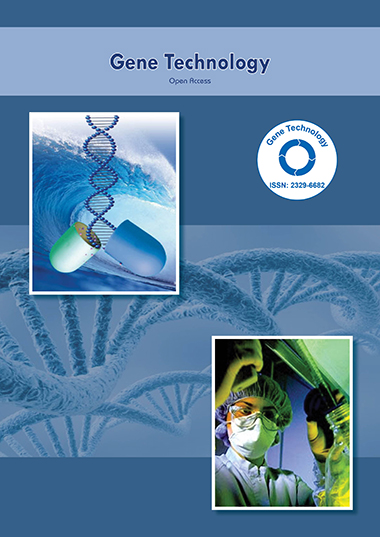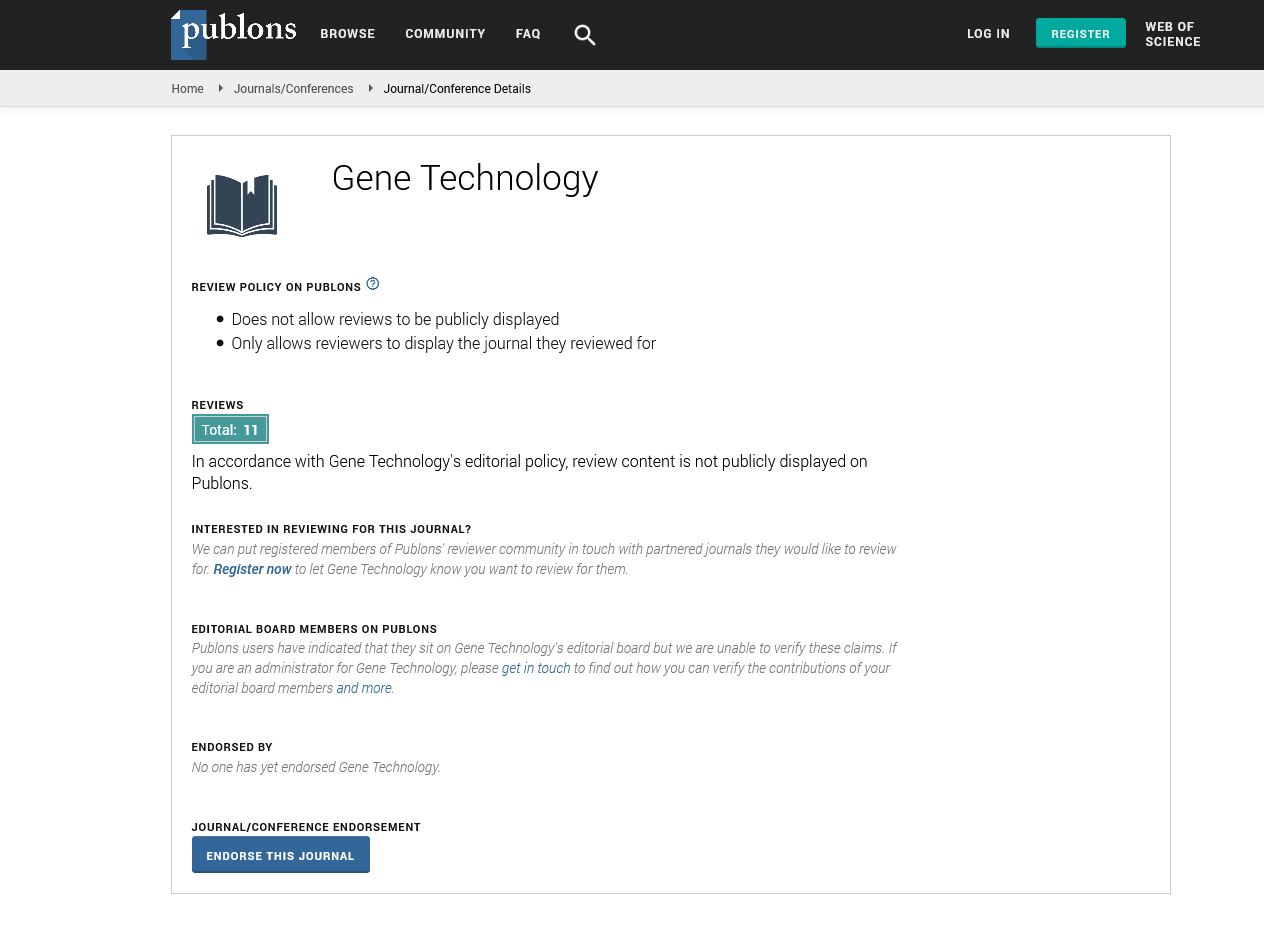Indexed In
- Academic Keys
- ResearchBible
- CiteFactor
- Access to Global Online Research in Agriculture (AGORA)
- RefSeek
- Hamdard University
- EBSCO A-Z
- OCLC- WorldCat
- Publons
- Euro Pub
- Google Scholar
Useful Links
Share This Page
Journal Flyer

Open Access Journals
- Agri and Aquaculture
- Biochemistry
- Bioinformatics & Systems Biology
- Business & Management
- Chemistry
- Clinical Sciences
- Engineering
- Food & Nutrition
- General Science
- Genetics & Molecular Biology
- Immunology & Microbiology
- Medical Sciences
- Neuroscience & Psychology
- Nursing & Health Care
- Pharmaceutical Sciences
Perspective - (2025) Volume 14, Issue 1
The Expanding Role of Gene Editing in Revolutionizing Health Food Security and Molecular Research
Yuan Wei*Received: 01-Mar-2025, Manuscript No. RDT-25-29034; Editor assigned: 03-Mar-2025, Pre QC No. RDT-25-29034 (PQ); Reviewed: 17-Mar-2025, QC No. RDT-25-29034; Revised: 24-Mar-2025, Manuscript No. RDT-25-29034 (R); Published: 31-Mar-2025, DOI: 10.35248/2329-6682.25.14.311
Description
Gene editing is one of the most transformative advancements in the field of gene technology, allowing precise alterations in the DNA of living organisms. This capability to edit the genome has paved the way for innovative progress in medicine, agriculture, and biotechnology. Over the past two decades, researchers have developed several gene editing tools, with CRISPR-Cas9 emerging as the most widely adopted due to its efficiency, affordability, and ease of use.
At its core, gene editing involves making targeted changes to the genome by inserting, deleting, or replacing specific DNA sequences. Early methods relied on Zinc Finger Nucleases (ZFNs) and Transcription Activator-Like Effector Nucleases (TALENs), which are engineered proteins that recognize and cut specific DNA sequences. These tools, while effective, required complex design processes and were relatively expensive to produce. The discovery of CRISPR-Cas systems, adapted from bacterial immune defense, marked a turning point in gene editing technology. CRISPR-Cas9 uses a guide RNA to direct the Cas9 nuclease to a specific location in the genome, where it introduces a double-strand break. The cell’s natural repair mechanisms then fix the break, during which targeted genetic modifications can be introduced.
The applications of gene editing are vast and growing rapidly. In medicine, gene editing has opened new possibilities for treating genetic disorders such as sickle cell anemia, cystic fibrosis, and muscular dystrophy. Clinical trials using CRISPR-based therapies have already demonstrated promising results in patients, offering hope for durable cures. Additionally, gene editing is being explored in oncology, where modified immune cells are engineered to recognize and destroy cancer cells more effectively. In infectious diseases, CRISPR-based strategies are being developed to target viral genomes, including those of HIV and hepatitis B.
Beyond medicine, gene editing is revolutionizing agriculture. Crops can be engineered to possess desirable traits such as drought resistance, improved nutritional content, or reduced dependence on chemical pesticides. Unlike traditional genetic modification, gene editing can produce changes that are indistinguishable from natural mutations, potentially easing regulatory hurdles and public acceptance. Livestock can also benefit from gene editing through enhanced disease resistance and improved productivity.
In conclusion, gene editing represents a powerful convergence of biology and technology. It holds the promise to treat previously incurable diseases, improve food security, and expand our understanding of life at the molecular level. As scientists and society navigate the ethical dimensions and technical challenges, responsible innovation will be key to harnessing its full potential for the betterment of humanity.
Citation: Wei Y (2025). The Expanding Role of Gene Editing in Revolutionizing Health Food Security. Gene Technol. 14:311.
Copyright: © 2025 Wei Y, et al. This is an open-access article distributed under the terms of the Creative Commons Attribution License, which permits unrestricted use, distribution, and reproduction in any medium, provided the original author and source are credited.

